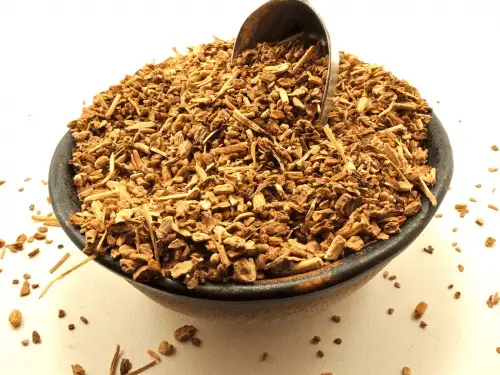Sarsaparilla and root beer are popular beverages that are made with roots and vines. Originally prepared as either a tonic or a medicinal drink in the past, these beverages are deeply embedded in the American culture. Read more to learn about the differences between the two.
Summary Table
| Sarsaparilla | Root Beer |
| First used by Native Americans as a medicinal drink | First introduced as a commercial beverage developed by Charles Elmer Hires in 1875 |
| Slightly bitter | Loaded with sweet and light flavorings |
| Initially used as a medicinal drink | Exists as a carbonated, non-carbonated, alcoholic, or non-alcoholic drink |
| Originally made by crushing the roots of sarsaparilla plant | Made by combining the sarsaparilla plant with other ingredients such as cinnamon, anise, aspartame, honey, wintergreen, and nutmeg |
| Widely known as an antioxidant and an anti-inflammatory agent | Old root beer variants were made with a cancer-causing oil extract, which led to changes in its preparation |
Descriptions

Sarsaparilla is a plant with small, woody vines. It is commercially used for the preparation of the sarsaparilla beverage – a slightly bitter medicinal drink.

Root beer, on the other hand, is a drink made from combining different roots and ingredients like vanilla, cinnamon, and wintergreen.
Sarsaparilla vs Root Beer
Although they are both commercially-important beverages in America and other parts of the globe, there is still a huge difference between sarsaparilla and root beer.
History
Sarsaparilla, coined from the Spanish term zarzaparrilla, bears a long and rich history. According to studies, sarsaparilla was first used by Native Americans as a medicinal drink before it was discovered by Spaniards, who brought the beverage to different parts of Europe. Despite its health benefits, many believe that sarsaparilla’s natural flavoring – which can be quite offensive to some – led to the introduction of root beer.
Root beer, which is made from sarsaparilla and other ingredients, was first introduced as a commercial beverage developed by Charles Elmer Hires in 1875. Hires originally intended to name the beverage “root tea,” but he used “root beer” instead to boost sales among Pennsylvanian coal miners. As root beer rose in popularity in the 1890s, non-alcoholic variants soon became available to the market.
Flavor Profile
To say that there is a slight difference between sarsaparilla and root beer in terms of flavor is an understatement. The original sarsaparilla, which is made with root and bark extract, is slightly bitter, while root beer is loaded with sweeter and lighter flavorings.
Classification
The original sarsaparilla is widely considered a medicinal drink, while root beer exists in carbonated, non-carbonated, alcoholic, or non-alcoholic forms.
Preparation
Sarsaparilla and root beer are both made with vines, but there are differences in their actual preparation. For one, the first sarsaparilla beverage was made by crushing the roots of sarsaparilla plant. As the drink evolved, wintergreen and licorice flavorings were added to the beverage to mask the bitter taste of the sarsaparilla root, making the sarsaparilla a root beer variant.
Unlike sarsaparilla, root beer is made by combining different roots and ingredients. While recipes may vary from one brand to another, root beer is commonly prepared by boiling water and molasses syrup. Then, other main ingredients such as yeast, wintergreen, and sarsaparilla root are added into the mixture before being fermented. For alcoholic root beer variants, the mixture undergoes secondary fermentation until the alcohol level reaches 2% or more. Other flavorings and preservatives such as vanilla, cinnamon, anise, aspartame, honey, nutmeg, and sodium benzoate may also be added to make the beverage more flavorful.
Health and Safety
Based on historical studies, sarsaparilla played a major role in curing syphilis back in the 15th century. Despite controversies revolving around its effectiveness, it is still largely known as an antioxidant and an anti-inflammatory agent in America and in other parts of the globe. Unfortunately, most, if not all, commercially-sold sarsaparilla are made with sarsaparilla flavorings that do not carry the health benefits of the original sarsaparilla drink.
The preparation of root beer, on the other hand, met changes due to health concerns. Unlike modern, sarsaparilla-based versions, the early root beer variants were made with sassafras bark, which produces an oily extract that is considered carcinogenic (a cancer-causing agent). Because of this, US-based root beer is now made with sarsaparilla extract instead of sassafras.





